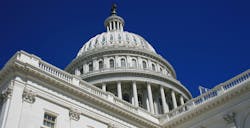Fair market-based payment rates for lab test services best serve patients and labs
The idea of reform is to make something better. In the opinion of the American Clinical Laboratory Association (ACLA)—and many other industry leaders—that is something the U.S. Centers for Medicare and Medicaid Services (CMS), in its implementation of Section 216 of the Protecting Access to Medicare Act (PAMA), has not done.
The ACLA supported the Clinical Laboratory Fee Schedule (CLFS) provisions of PAMA when it was passed in 2014. We have repeatedly stated that we share the clear goals of Congress: the development of a market-based fee schedule that would provide predictability and rationality in payment for lab services; encouragement of a system that would reward innovation; and, most important, the establishment of a reimbursement policy that would maintain Medicare beneficiary access to lab services.
A faulty payments methodology
Last September, the CMS released new draft payment rates for clinical laboratory services for Medicare patients. In keeping with the goal of PAMA, ACLA advocated basing payment on the private market rates of all laboratories. However, CMS sidestepped the intent of the law and collected data from less than one percent of all laboratories in the United States. Most physicians and hospitals were prohibited from providing information, as were other laboratories that would clearly provide a more accurate picture of lab test pricing. Because of this flawed methodology, the draft payment rates fell well below the cost of providing services for many laboratories.
Although minor modifications recommended by ACLA in comments on the draft rates have been incorporated in the final rates, the agency’s skewed methodology will still wreak havoc on the clinical laboratory sector.
Clinical laboratories have diligently worked with CMS and other stakeholders since the enactment of PAMA, and have provided constructive recommendations on how to implement CLFS reform consistent with the intent of Congress. Moreover, ACLA joined 21 other stakeholders in a letter to CMS Administrator Seema Verma requesting “immediate action to address the significant deficiencies in its process to establish new clinical laboratory payment rates.” Additionally, ACLA submitted comments to CMS in response to the agency’s proposed data reporting and collection requirements and the September 2017 announcement of the proposed payment rates that are based upon incomplete and inaccurate data.
Despite concerns voiced by a number of organizations with the substance of the rule, the accuracy and integrity of the laboratory payment data provided to CMS, and the severe consequences for a critical industry, CMS pressed forward with a flawed approach and produced a flawed outcome.
Possible consequences of flawed and inaccurate rates
It is imperative that Congress, CMS, and all stakeholders achieve PAMA’s intent: a true market-based payment solution for laboratory services that best serves both labs and the patients benefitting from important lab testing services.
Unless PAMA is delayed and reformed as Congress intended, the impact will be unprecedented and far-reaching. The operations of many ACLA members and other laboratories will be devastated and result in severe disruptions in access to laboratory services. Labs serving rural areas and the most vulnerable Medicare patients will be hit the hardest, as they will be challenged by payment rates that do not support the services they provide.
The impact will be felt not only by laboratories and the patients they serve, but more broadly in communities throughout the U.S. A recent economic analysis shows the clinical laboratory sector is a strong industry that delivers jobs, provides economic growth, and contributes to the quality of patient care nationwide. Labs operate in all types of communities, including those that are medically underserved, and care for all patients, including Medicare beneficiaries and those who lack mobility due to poor health or other circumstances.
The Economic Impact of Clinical Laboratories Study, sponsored by ACLA, is a first-time analysis of the economic contributions of the clinical laboratory industry for the country, states, and congressional districts. For the U.S. alone, the clinical laboratory industry:
- Provides more than $40 billion in wages.
- Employs or is responsible for more than 622,000 direct and indirect jobs.
- Pays more than $13 billion in taxes.
- Generates more than $100 billion in overall economic output.
If the PAMA payment rates are implemented, many clinical laboratories will be hard-pressed to maintain employees, let alone continue to advance medical innovation. Notably, our sector is an integral component of personalized medicine that has enhanced the ability of clinicians to more accurately diagnose and treat their patients.
The way forward
Since gross deficiencies in CMS’s process to determine rates were not addressed following a united push by many stakeholders to have implementation of the rates halted, ACLA will continue to advocate before all branches of government, including the courts if necessary, for a fair and effective market-based policy solution that encourages innovation and protects Medicare beneficiary access to laboratory services.
The health of the clinical laboratory sector—and most important, the health of Medicare beneficiaries—depends on waging and winning this fight.

